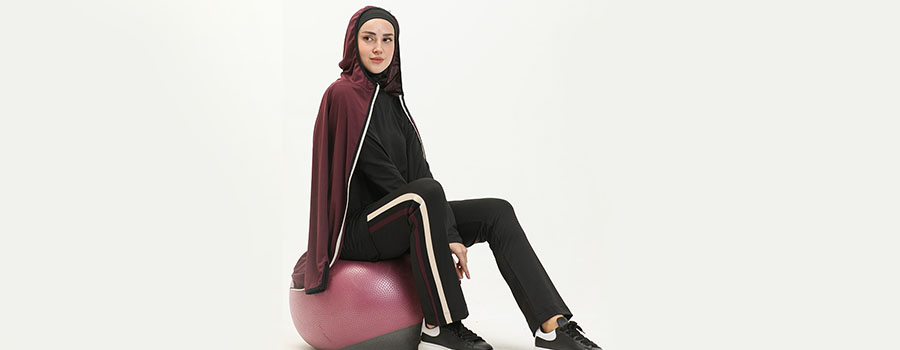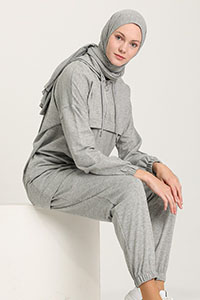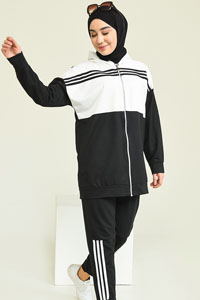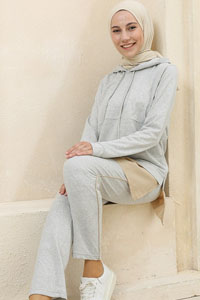
How to Choose Running Shoes?
When you walk into any local running store, a colorful wall displaying dozens of shoes will greet you. Needless to say, choosing sneakers and selecting the best-fitting shoe from a plethora of options is difficult. To complicate matters further, only some shoes are suitable for you.
Whatever pair you choose must fit properly from heel to toe and be comfortable with your regular running stride. We are here to help whether you shop online or in-store. Continue reading to explain shoe anatomy and how to choose running shoes.
Fit of the Shoe
Each component of a running shoe serves a specific purpose and is designed to fit the foot in a specific way. Your health is the priority, and the slightest distinction may affect your comfort and health. There are some tips about how to choose running shoes below:
-
Measure both feet: Because your foot size changes over time, it is critical to measure both feet when trying on new running shoes.
-
Try on shoes at the end of the day: Your feet swell all day and are at their largest. This causes you to choose the right size for your feet and avoid smaller sizes than your feet.
-
Try on both shoes: Some people have larger feet than others. Try on both the right and left shoe to find the best pair for your larger foot.
-
Aim for a toe box that is the thumbnail's length: You should be able to wiggle your toes.
The width should be snug but allow for some movement of your foot without rubbing. The lace should be snug but not too tight.
-
Make sure they are at ease right away. Running shoes should feel comfortable.



Where Do You Plan to Run?
The terrain you plan to run on gains importance when deciding how to choose running shoes. Running shoes are divided into two types: trail and road. There are several significant differences between road and trail running shoes, but in general, trail shoes have more grip and tread on the sole, whereas road shoes have flatter, more efficient soles.
Knowing how to choose running shoes based on the terrain you run the most is critical to avoid injury and improving your running performance. On rough roads, the weight is placed on the knees, joints, and ankles. As a result, road running shoes typically include shock absorption and support features to keep you safe from injury.
Design of the Sneakers
When deciding how to choose running shoes, consider the shape of the sneaker.
-
Motion control shoes are constructed on a straight last. Flip the shoe over and examine the bottom. A motion-control shoe has a wide, straight shape. This shoe is for you if you have a flat foot and overpronate. This shoe will keep you from rolling in too far. It provides the most support and control for your foot.
-
Stability shoes will be semi-curved in shape. Choose a stability shoe if you have a normal arch and are slightly pronated. Stability shoes provide an excellent balance of cushioning and support.
-
The most curved shoes are neutral cushioning shoes. A neutral cushion shoe is best if you have a high-arched foot and are supinate. Cushioned shoes absorb the impact that your foot cannot absorb naturally.
Sock Type is Also Important
It may seem insignificant, but the thickness of your sock can significantly affect the fit and feel of your shoe, especially as your feet expand in the heat. When going for a shoe fitting, always wear the socks you intend to run in. Consider a good, technical running sock with extra arch support and padding across the ball of the foot, toes, and heel for better impact protection.
Cotton socks, while comfortable, are not recommended for running. Cotton absorbs moisture, and when combined with the heat and friction of running, you are more likely to develop blisters, calluses, and hot spots. Always wear socks higher than the back of your running shoes, or they will slip down and cause friction hot spots on the back of your heel. When deciding how to choose running shoes, remember to factor in the socks.
How Many Cushions Do You Need?
Cushioning is essential for runners who under pronate, either because their feet do not roll inward enough or because they roll outward too much. The rolling motion absorbs the shock of each step, which would otherwise be transmitted through your joints to your spine.
High-cushioned shoes are intended to reduce shock by mimicking the natural process. Stability shoes provide cushioning, medial support, and durability as a compromise between motion control and cushioned shoes. They are intended to prevent excessive motion in your foot and ankle while not restricting movement too much. Lightweight running shoes are, as the name implies, lighter and, thus, more flexible.
Lightweight shoes typically have less weight and more flexible cushioning, combining the best of the "minimalist" approach with cushioning to protect your feet. Lightweight shoes will reduce fatigue and pain after a run while being extremely comfortable.
How Much Support Do You Require?
Consider when you run how your feet make contact with the ground. It’s necessary to have an idea of how to choose running shoes. During normal movement, the foot may roll in and flatten. This is called pronation.
Pronation is required up to a certain level, but not more. There are three types of pronation, and you may want shoes with features that support your level of pronation. Brands use different footwear technologies and features to reduce excessive movement. The technologies are designed to help the foot transition more smoothly.
One method for determining your pronation is to have a footwear specialist observe your running gait. Another method is to look at the wear pattern on well-worn running shoes. Depending on your biomechanics, you can find a level of support in your shoes to bolster your gait once you have decided what kind of ride you want from your shoes.
Consider Your Running Style and Previous Injuries
Running shoes are classified into four types: minimalist, neutral, stability, and motion control.
These various groups are providing increasing stability technology and gait correction. Do you pronate excessively? You may overpronate or heel strike. Do you have a history of plantar fasciitis or other running injuries? These questions will help you determine the type and degree of stability required in your running shoes. This article looked at how to choose running shoes and some advice and suggestions.
Sefamerve is an online clothing store aimed primarily at hijabi women. Its broad categories include everything for hijabi women, from sweatshirts to hijab tracksuit models. Remember to browse our online store for more inspiration.